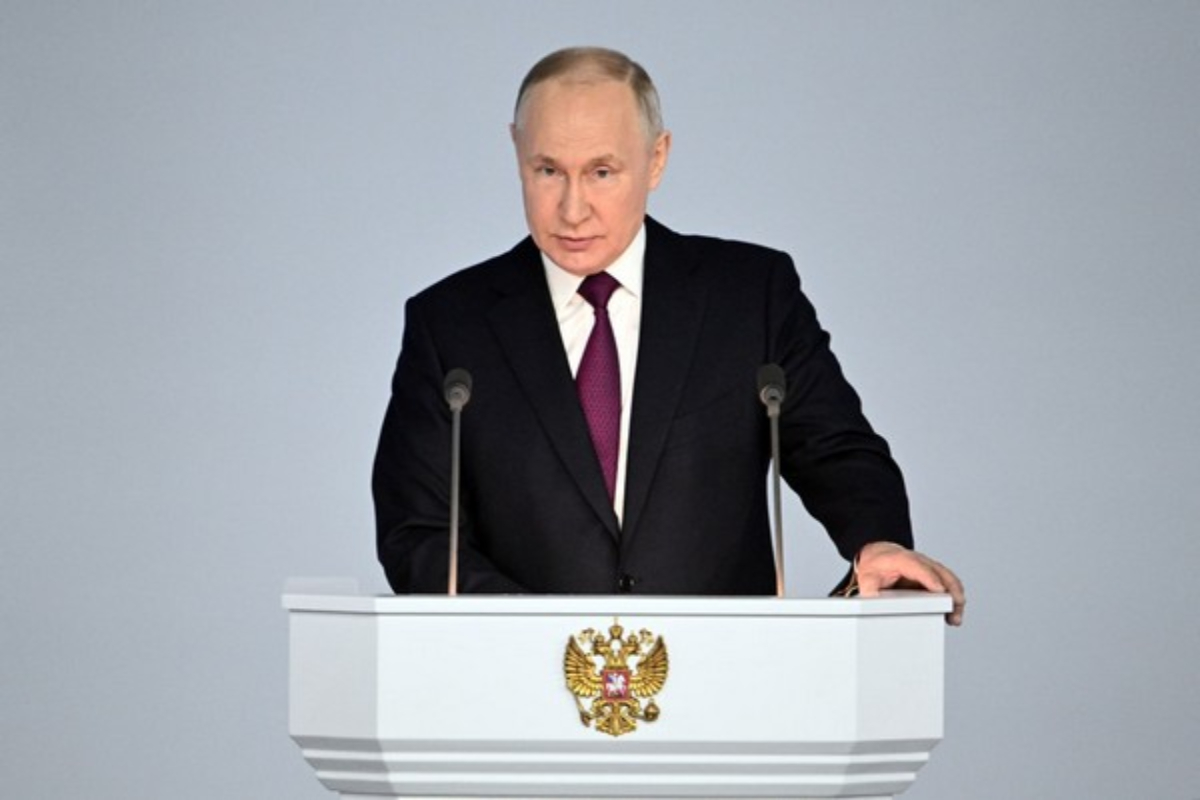Russia’s new foreign policy strategy adopted by President Vladimir Putin on Friday identified China and India as its main allies on the world stage.
The new 42-page document singled out ties with China and India, stressing the importance of “the deepening of ties and coordination with friendly sovereign global centers of power and development located on the Eurasian continent.” India and Russia maintained a close strategic, military, economic, and diplomatic interaction during the Cold War. Both Russia and India refer to this alliance as being unique and privileged.
Advertisement
The strategic partnership between India and Russia is based on five main pillars — politics, defence, civil nuclear energy, counter-terrorism cooperation, and space. India and Russia celebrated the 75th anniversary of their diplomatic relations.
According to the document, Russia will continue to build a particularly privileged strategic partnership with India with a view to enhancing and expanding cooperation in all areas on a mutually beneficial basis and place special emphasis on increasing the volume of bilateral trade, strengthening investment and technological ties, and ensuring their resistance to destructive actions of unfriendly states and their alliances.
“In order to help adapt the world order to the realities of a multipolar world, Russia intends to make it one of priorities to enhance the capacity and international role of the interstate association of BRICS, the Shanghai Cooperation Organization (SCO), the Commonwealth of Independent States (CIS), the Eurasian Economic Union (EAEU), the Collective Security Treaty Organization (CSTO), the RIC (Russia, India, China) and other interstate associations and international organizations, as well as mechanisms with strong Russian participation,” read the docuemnt.
Russia has been the largest supplier of weapons to India, accounting for nearly 50 per cent of the latter’s arms imports from 2016-2020.
“Russia will continue to build up a particularly privileged strategic partnership with the Republic of India with a view to enhance and expand cooperation in all areas on a mutually beneficial basis and place special emphasis on increasing the volume of bilateral trade, strengthening investment and technological ties, and ensuring their resistance to destructive actions of unfriendly states and their alliances,” added the statement.
Both China and India have also ramped up oil imports from sanctions-hit Russia amid the war in Ukraine.
The document said that Russia “aims at further strengthening the comprehensive partnership and the strategic cooperation with the People’s Republic of China and focuses on the development of a mutually beneficial cooperation in all areas, provision of mutual assistance, and enhancement of coordination in the international arena to ensure security, stability and sustainable development at the global and regional levels, both in Eurasia and in other parts of the world.”
President Vladimir Putin announced on Friday that he had penned a decree adopting Russia’s new foreign policy concept.
“Today, I signed a decree approving the updated concept of the foreign policy of the Russian Federation,” said Putin.
Putin said the Russian Foreign Ministry along with other departments had worked hard to bring the new foreign policy concept in line with modern realities.
Russian Foreign Minister Sergey Lavrov for his part underscored that the document directly calls the US the main instigator of anti-Russian politics in the world.
He added that the logic behind Russia’s new foreign policy concept reflects the revolutionary changes in international affairs.
“The logic of the document […] reflects the changing geopolitical realities, in fact, revolutionary advances on the outer contour, which received visible acceleration with the start of a special military operation,” Lavrov underlined.
The document, a de facto handbook for Russian diplomats, names the United States as the main threat to international stability and driver of an “anti-Russian line”. But it also says Moscow seeks “peaceful coexistence” and a “balance of interests” with Washington.
It called for Russia to maintain “strategic stability” with the United States – a reference to the nuclear capabilities of the two countries – despite having suspended the New START treaty, the last remaining nuclear arms control pact between the two sides, in February.











